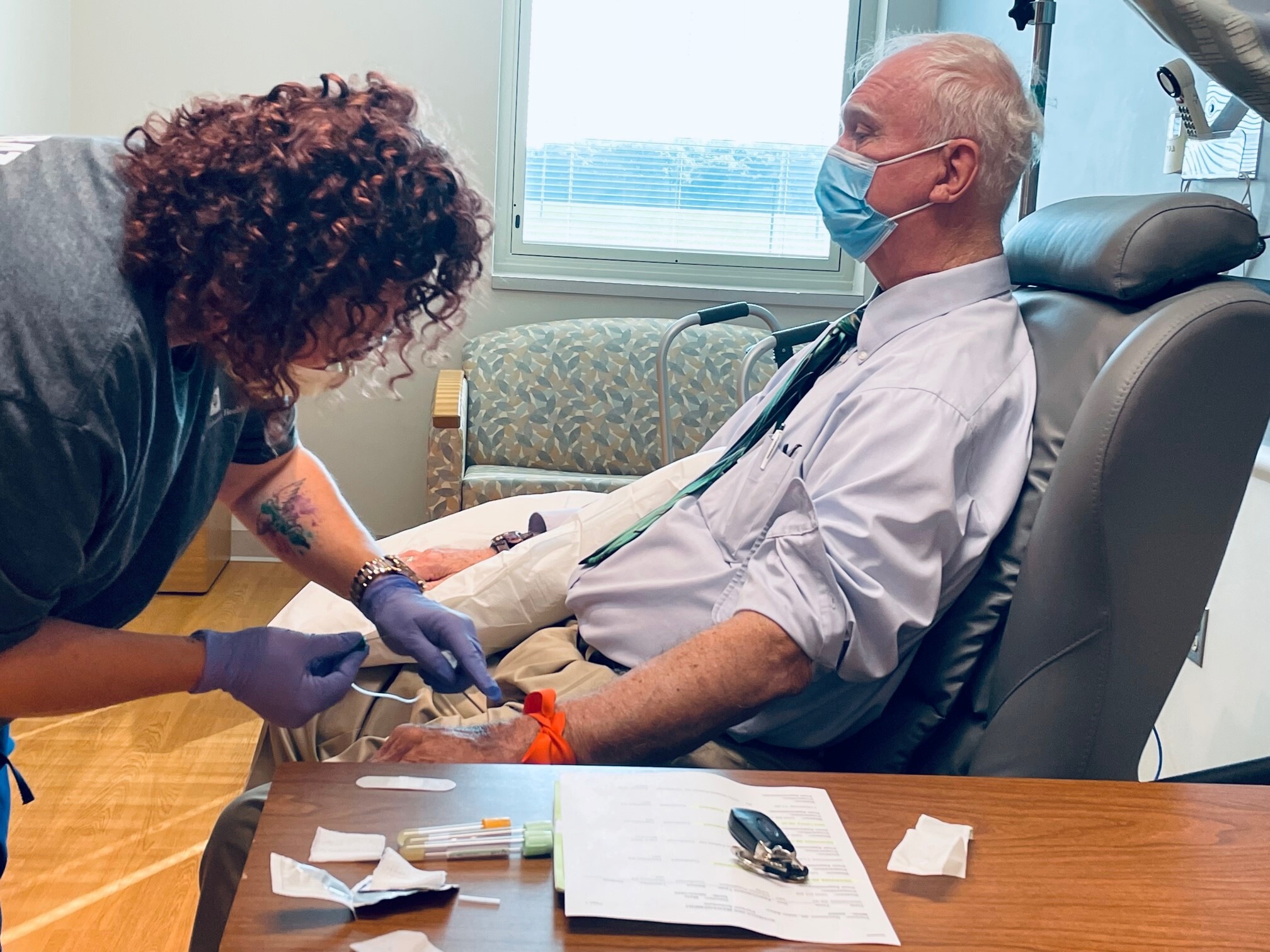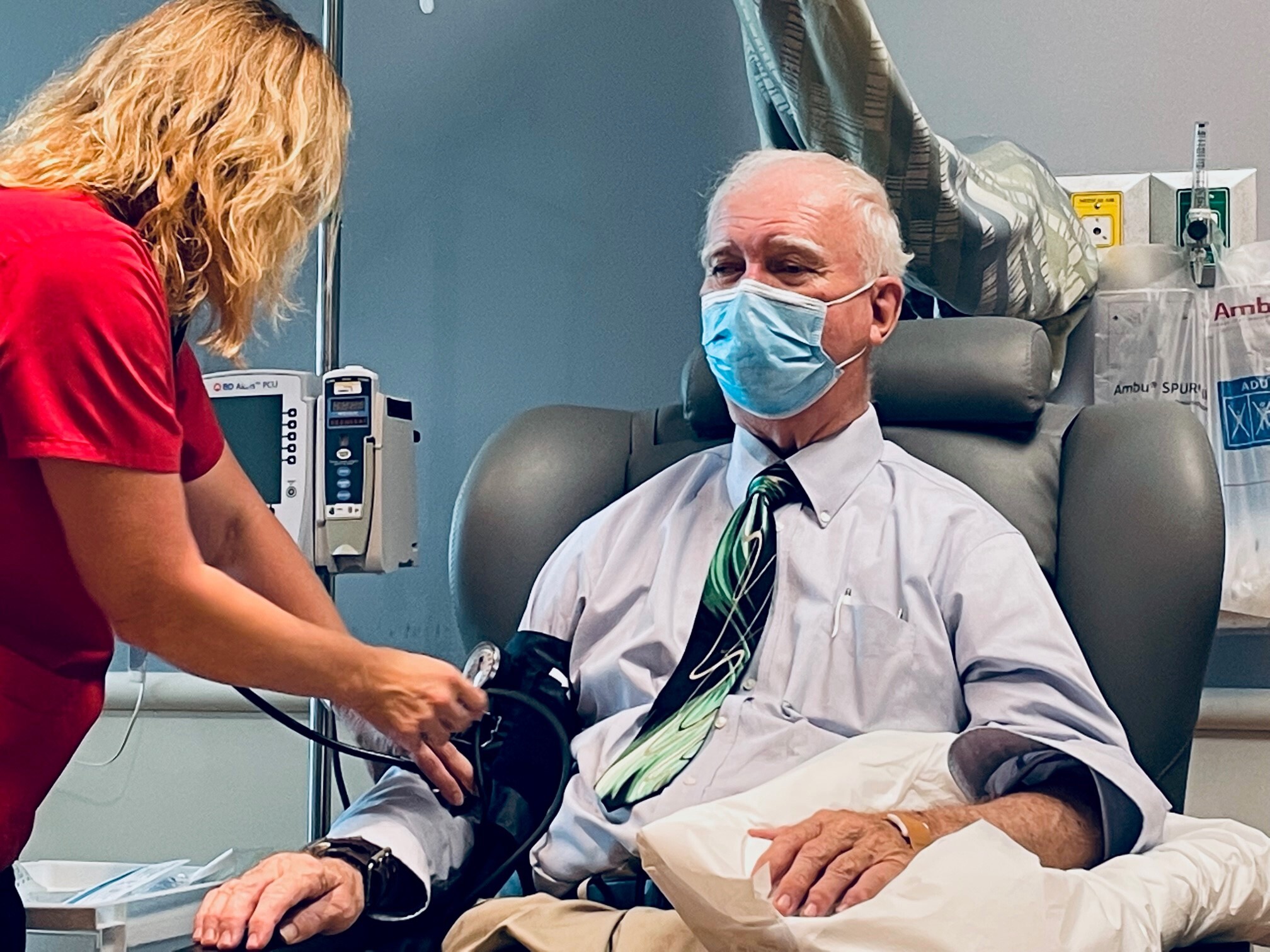<p><em>By IU Health Senior Journalist, TJ Banes, tfender1@iuhealth.org</em></p>
<p>Her late mother always told Lisa Graves: “Look around you and you can always find someone worse off than you.” </p>
<p>Those are words Graves has lived by. Her mother passed in 2004. There was another lesson Graves learned from her mother – trust your instincts when it comes to your health. Her mother was diagnosed with colon cancer that resulted in three surgeries. So when Graves was experiencing pains in her side she went to urgent care. The pain continued when her doctor applied pressure so an CAT-scan was ordered. </p>
<p>In March, Graves underwent colon surgery. The diagnosis: Stage 3 colon cancer. In the care of <a href=”https://iuhealth.org/find-providers/provider/patrick-j-loehrer-md-7750″>Dr. Patrick Loehrer</a>, Graves completed her final round of chemotherapy on October 3. </p>
<p>“I’m at a loss for words. I can’t begin to describe the care I received. Every time I sent an email to Dr. Loehrer’s office with questions, they connected me with the right person,” said Graves, 57. </p>
<p>Thirty-nine years ago, Graves married her husband, Robert. Together they have two adult sons.</p>
<p>“There are so many times I wish I could call my mom and ask her questions but she’s not here. All I have left is her colonoscopy report that I shared with my doctor,” she said. Her mother eventually recovered from the colon cancer; her death was the result of a stroke.</p>
<p>It has been her husband, Robert who has served as Graves’ constant companion and caregiver. She was hospitalized for three days after surgery and has spent hours at IU Health Simon Cancer infusion center. </p>
<p>“I look around and see all these people and I think how lucky I am,” said Graves, who received a “cancer free” report in July and has a second scan scheduled for December. She recently returned to her job as a custodian at Ben Davis Christian School. She said she feels fine except for some tingling in her fingers and toes – a result of the chemotherapy.</p>
<p>During a recent visit to IU Health Simon Cancer Center she learned about a technique to ease that tingling. Massage therapist Michelle Bailey used a small ball to demonstrate how Graves could practice with the tool to relieve neuropathy. </p>
<p>Also during her visit back to IU Health, Graves brought along gifts for other patients – coloring books, pencils, pens, puzzles, and crosswords. She has made it her mission to donate the items to the Cancer Resource Center to be distributed to other patients and their caregivers. </p>
<p>The IU Health Cancer Resource Center is located on the first floor of IU Health Simon Cancer Center. It is a place where cancer patients and caregivers can receive free information and education to help navigate through their cancer journey. The Center is also home to CompleteLife, a program that provides complementary therapies such as yoga, music, art and massage. </p>
<p>Graves’ recent donation was not her first and she said it won’t be her last. Her goal is to get relief in her hands so she can crotchet afghans for patients. </p>
<p>“Every time I’m there, I look around and say, ‘I’m so blessed. There are people a lot worse off.”</p>




